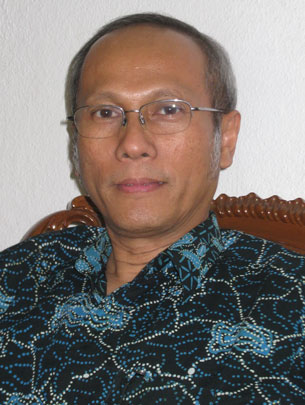The Indonesian Consul General in Ho Chi Minh City has said that the city’s traffic situation may be complicated, with bus drivers driving recklessly, but it still fares better than that of the capital of Indonesia, which has even more motorbikes and buses than Vietnam.
>> Bus runs over, kills boy in HCMC
Tri Surya, the Indonesian Consul General in HCMC, who has been living in HCMC for over one year, said that although the Vietnamese metropolis is plagued with traffic congestion, drivers usually still arrive at their destinations roughly on time.
Meanwhile, during rush hour in Jakarta, one is never sure when they will reach their destination, Surya stressed.
In Jakarta, which has the population of some 11 million but has yet to have a high-end metro system as Thailand, Singapore and Malaysia do, the number of individual vehicles rose by 11 percent in 2013 while road expansion lags far behind at a mere 0.01 percent.
The capital city now has more than 38 million individual vehicles, including over 26.1 million bikes and 6.1 million cars.
172km express bus system
According to Surya, the Jakarta government has been making tremendous efforts to curb traffic jams by allowing only cars carrying two or more passengers to drive during peak hours. This law is enforced with a fine for those who do not follow it.
The situation only improved considerably when an express bus service called Trans Jakarta, the first of its kind in Southeast Asian and South Asian regions, was launched in 2004.
The bus system, which measures some 172km in total length, is possibly the longest in the world.
Running on 12 routes, the system carries some 310,000 passengers a day.
Even during rush hour, when streets are seriously congested, the bus still travels comfortably in its own lane.
The bus lane is higher than the normal road surface and has high edges, which keeps drivers of other vehicles from entering it, thus avoiding incidents involving the buses and other vehicles.
The Trans Jakarta bus stops are built some 60-80 cm higher than the average road surface and the doors of the bus are adjusted to allow passengers to get on and off without any trouble.
Lift time limits; smaller buses recommended
Surya also noted that as conventional bus drivers in Jakarta are not under time pressure, they are not involved in many accidents.
“Since HCMC and Hanoi have narrow, crowded streets, the local governments should consider using small-sized buses with less than 30 seats,” the consul suggested.
Such buses would be considerably easier to maneuver on packed streets and minimize traffic congestion and accidents, he said.
In addition, bus companies should not apply time limits on their drivers to relieve them of pressure and allow them to drive more carefully, the diplomat noted.
Fatal bus accidents
Earlier this month, a bus crashed into a motorbike in HCMC, running over and killing a 12-year-old boy who was riding with his mother and brother, who both survived.
This is the latest in a string of similar accidents involving buses that have occurred in the city since early this year.
In late February, a bus drove into a fence surrounding a construction site in District 1, killing a 60-year-old man on the spot.
The man was walking beside the metal sheet fence when the bus crushed him to death against the barrier.
In early January, a bus also killed a 20-year-old man at the intersection of Au Co and Nguyen Hong Dao Streets in Ward 14, Tan Binh District.
The accidents have raised alarm among locals regarding the safety of city buses.
Buses can easily hit other vehicles whenever they pull into and out of lanes to pick up passengers, as the city has no exclusive bus lanes and the streets of Vietnam’s largest cities are generally very narrow.
Bus drivers in Vietnam often make use of traffic law loopholes and the necessity of public transportation to violate traffic laws and thus threaten the safety of other vehicles.
They generally drive in all lanes and sometimes even on the wrong side of the street, thus encroaching upon space intended for other vehicles while habitually swerving between lanes, speeding, running red lights, and blasting their horns for no reason.
With their large size and heavy load of up to 45 passengers, these buses are often called ‘evil geniuses’ by drivers of smaller cars and motorbikes.



















































